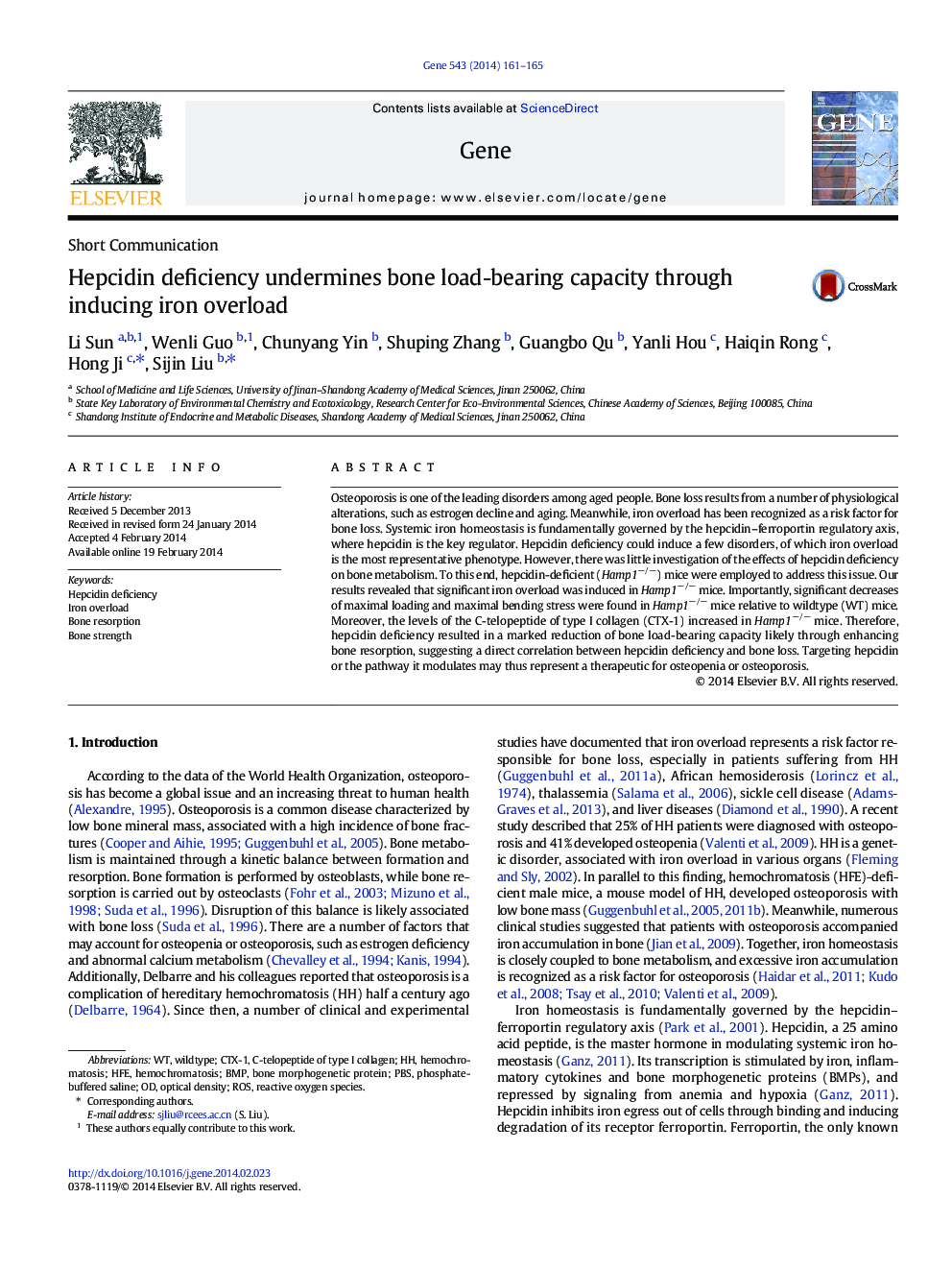| Article ID | Journal | Published Year | Pages | File Type |
|---|---|---|---|---|
| 2816363 | Gene | 2014 | 5 Pages |
•Hepcidin deficiency leads to enhanced bone resorption.•Loss of hepcidin is associated with bone loss.•Hepcidin deficiency undermines bone biomechanical properties.
Osteoporosis is one of the leading disorders among aged people. Bone loss results from a number of physiological alterations, such as estrogen decline and aging. Meanwhile, iron overload has been recognized as a risk factor for bone loss. Systemic iron homeostasis is fundamentally governed by the hepcidin–ferroportin regulatory axis, where hepcidin is the key regulator. Hepcidin deficiency could induce a few disorders, of which iron overload is the most representative phenotype. However, there was little investigation of the effects of hepcidin deficiency on bone metabolism. To this end, hepcidin-deficient (Hamp1−/−) mice were employed to address this issue. Our results revealed that significant iron overload was induced in Hamp1−/− mice. Importantly, significant decreases of maximal loading and maximal bending stress were found in Hamp1−/− mice relative to wildtype (WT) mice. Moreover, the levels of the C-telopeptide of type I collagen (CTX-1) increased in Hamp1−/− mice. Therefore, hepcidin deficiency resulted in a marked reduction of bone load-bearing capacity likely through enhancing bone resorption, suggesting a direct correlation between hepcidin deficiency and bone loss. Targeting hepcidin or the pathway it modulates may thus represent a therapeutic for osteopenia or osteoporosis.
